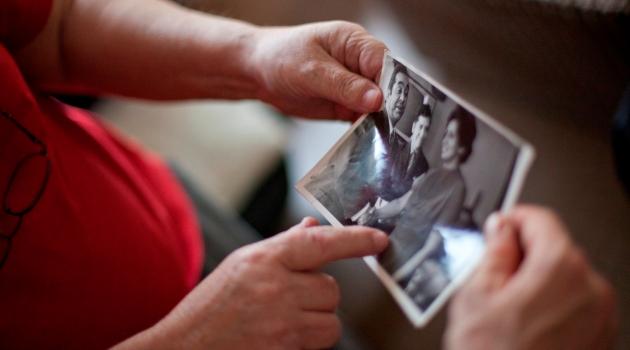Czech Republic: Unique exhibition reviews postwar memories of migrant Romani workers

On Monday, 1 June an unusual exhibition called "Khatar san?" opened at the Hraničář Cinema and Gallery in the Czech town of Ústí nad Labem. The exhibition is the result of an applied social research project, "Romani Workers’ Memories", and is being exhibited in the Czech Republic for the fifth time.
Previous showings of the exhibition in Brno, Mladá Boleslav, Ostrava and Prague have been a great success. Its subtitle, "How Slovak Roma came to the Czech lands for work and what happened thereafter" reveals the exhibition’s topic – through the stories of those who experienced this history, the migration of Romani people for work, primarily during the 1950s and 1960s (the postwar era) is reviewed.
Most frequently the main reasons for Romani people moving in this way within the reconstituted Czechoslovakia were the change of regime and the war. The exhibition and the project are completely unique, as is confirmed by its author, Kateřina Sidiropulu Janků: "We are filling in the blank spots in the history of the postwar Czech lands. The stories of these people show that the Slovak Roma are, just like all other Central Europeans, like showcases of great history, of dramatic wartime and postwar events. Like many senior citizens today, they too are concerned about the future of the world and the life prospects of their loved ones."
The exhibition is unique not just in its topic, but also in is format. "In the previous places where the exhibition toured, it took the form of a stylized Romani apartment. The format will be different in Ústí, but the idea will remain – to attempt, through the exhibition, to break down the prejudices held by the majority society and give people the opportunity to think about the Romani people who came to the Czech lands to work," says Lucie Skalníková, a member of the design team.
The new audiovisual concept of the exhibition attempts this by offering visitors the opportunity to familiarize themselves with the lives of the Romani people concerned, who now hail from Brno and Ostrava, in a genuinely intimate way. Visitors have the opportunity to sit down in the atrium of the Hraničář and listen to or read these stories, which first began to be written long ago in the last century.
Through the exhibition, those who experienced this history describe their lives in Slovakia, the reasons they migrated, their perspective on their own futures and that of the entire Romani ethnicity, as well as how the main theme of the exhibition – work – relates to this all. The 1 June opening of the exhibition was slated to feature a musical performance by the band Londo Cukros and a dance performance by the Lion group.
The exhibition is open daily from 15:00 – 18:00 Monday through Friday, with changes on the weekends depending on the program at the venue. Entry is free.
"Khatar san" will be on view in Ústí until 31 July, after which it will return to Ostrava for a second showing. This particular installation is being held under the auspices of the Vice-Mayor of the Předlice municipal department, Karel Karika.
The project itself has been realized by the Sociology Department of the Faculty of Social Studies at Masaryk University and various partners as part of the NAKI (National and Cultural Identity) program. It is financed by the Czech Culture Ministry.